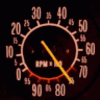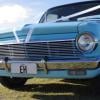Any IR setup will tolerate more duration than a shared plenum intake... it's the isolated runners, not the Webers...
You are very likely correct and I tend to agree, but nonetheless, the end result is the same from where I am sitting... An over cammed/ long duration cammed engine will idle relatively well with webers when compared to many other induction setups. Whether it be the manifold attached to the webers or the webers themselves, to me, whilst interesting for scientific conversation, is somewhat irrelevant to the average punter who just wants their cranky engine to idle well and run crisp. If you can get webers for the right price, go for it I say... If there are other individual runner setups that will do a similar job of smoothing things out, great, go with whatever floats your boat or whatever one can find I say...
Ultimately, I am not a one eyed weber man, hence why I have invested some cash to have a go at 2 inch SUs for some comparison. In saying that, just dismissing webers as being a rubbish carb is crazy, because they are not a rubbish carb. Complex, yes. Easy to tune, no, Perform, Yes, when tuned well and used in the right application, they are fantastic. But that is not saying that a very well tuned SU or Strommy would not perform equally as well, I just think its horses for courses. I find some modern quad cam engines overly complex and sometimes over engineered for my liking, and I hate working on them, but that does not mean they do not have advantages. Maybe a bad example, but just a point I am trying to make 
I have experimented with a 1310 austin engine in a sprite, swapping from twin 1 1/2 SUs to a single 45DCOE weber. My observations with that setup, was that the SUs had more snap and response below 3500rpm. Above this, the SUs were relatively flat. The weber, was the opposite- somewhat flat below 3000rpm and above this, the response was awesome. The 5-6000rpm range the weber was superior. In a straight line, it is hard to say which would be quicker though, as the SUs would snap out from a start better, then fade off, and the opposite for the weber. I suspect over 200 meters they would be very similar. Both setups were tuned well. Weber had smallish 32mm chokes.
At the end of the day, with that siamesed port engine, they were both strong in different ways, but they certainly made the engines behave somewhat differently. I have always liked 2 stroke bikes and carts, and webered engines seem to behave somewhat 2 stroke like in my experience, from which my take on it is that the fixed choked setup has a sweet spot where the airspeed is ideal, which creates a harmony zone for the engine, just like when a 2 stroke is on the pipe. In saying that, this may give many the shytes... Just an observation...
By the way old johnno, I also love Mikuni carbs, if only i could get 6 and a suitable manifold! 
Edited by LC-GTR-1969, 11 February 2016 - 07:49 PM.




 View Garage
View Garage











